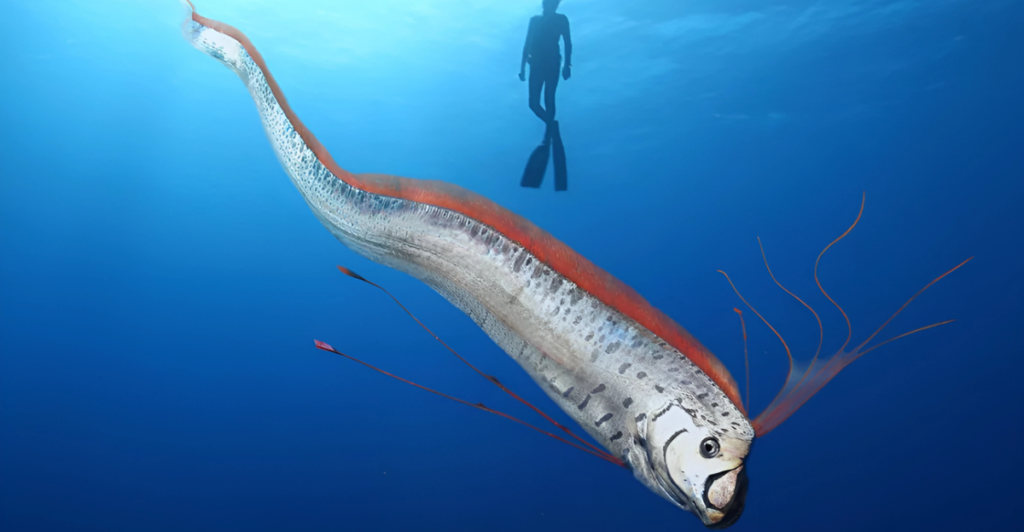
The blue whale (Balaenoptera musculus) is the largest animal known, reaching lengths up to 100 feet and weights of approximately 200 tons. Despite their massive size, these gentle giants primarily consume tiny shrimp-like creatures called krill, ingesting up to four tons daily. Found in oceans worldwide, blue whales were once on the brink of extinction due to extensive whaling but have seen a gradual population increase thanks to international conservation efforts.
Colossal Squid: The Deep-Sea Behemoth
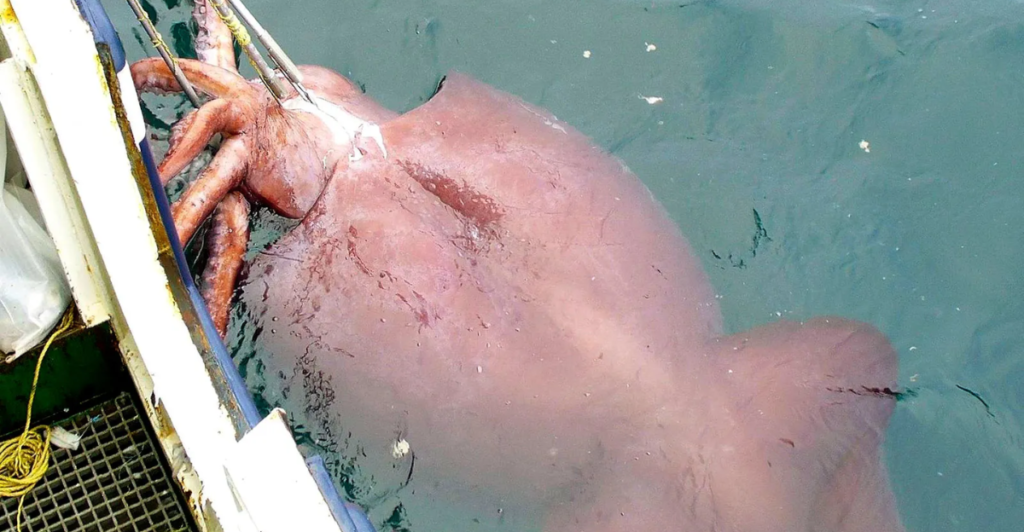
The colossal squid (Mesonychoteuthis hamiltoni) is one of the largest known invertebrates, with estimates suggesting it can reach lengths up to 46 feet. Inhabiting the deep, cold waters of the Southern Ocean, this elusive creature is equipped with swiveling hooks on its tentacles, aiding in capturing prey. Due to the squid’s deep-sea habitat, encounters are rare, and much about its biology remains a mystery.
Whale Shark: The Gentle Filter Feeder
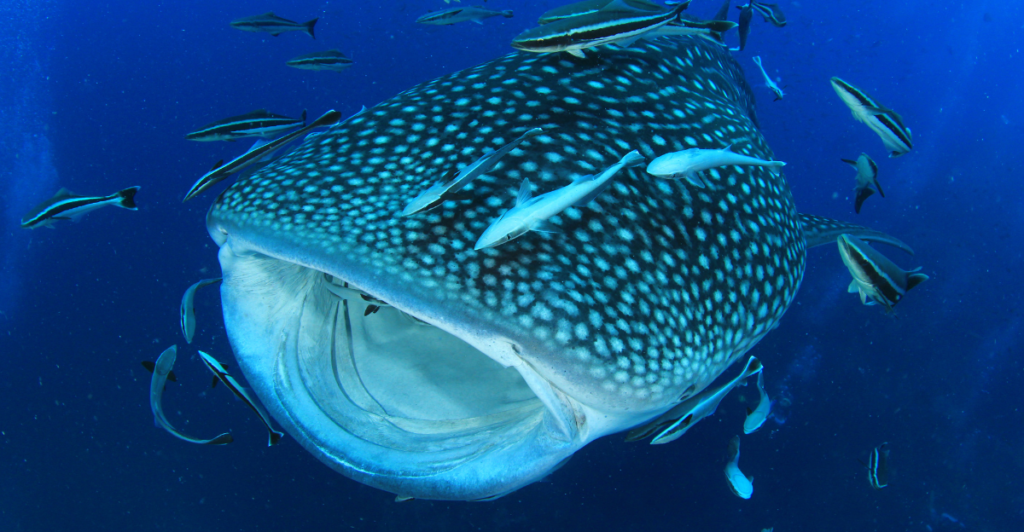
The whale shark (Rhincodon typus) is the largest known fish species, measuring up to 40 feet long. Despite their size, whale sharks are filter feeders, consuming plankton and small fish. They inhabit warm tropical oceans and are known for their distinctive spotted patterns. These gentle giants pose no threat to humans and are often a highlight for divers and snorkelers.
Sperm Whale: The Deep Diver
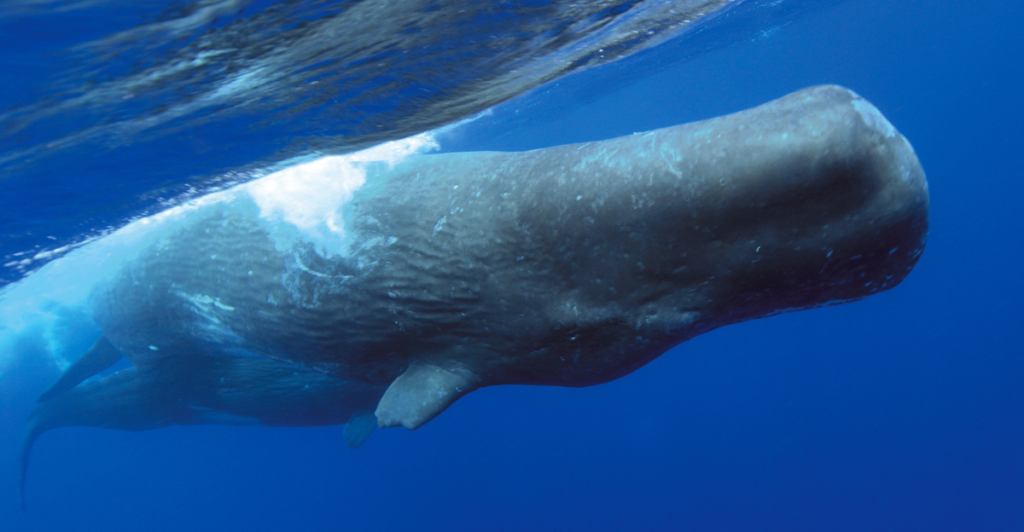
The sperm whale (Physeter macrocephalus) is the largest of the toothed whales, with males reaching lengths of up to 67 feet. Known for their massive heads containing spermaceti, a waxy substance, sperm whales are deep divers, plunging over 3,280 feet to hunt for squid, including the elusive giant squid. They are found in oceans worldwide and are recognized for their complex social structures and vocalizations.
Giant Manta Ray: The Graceful Glider
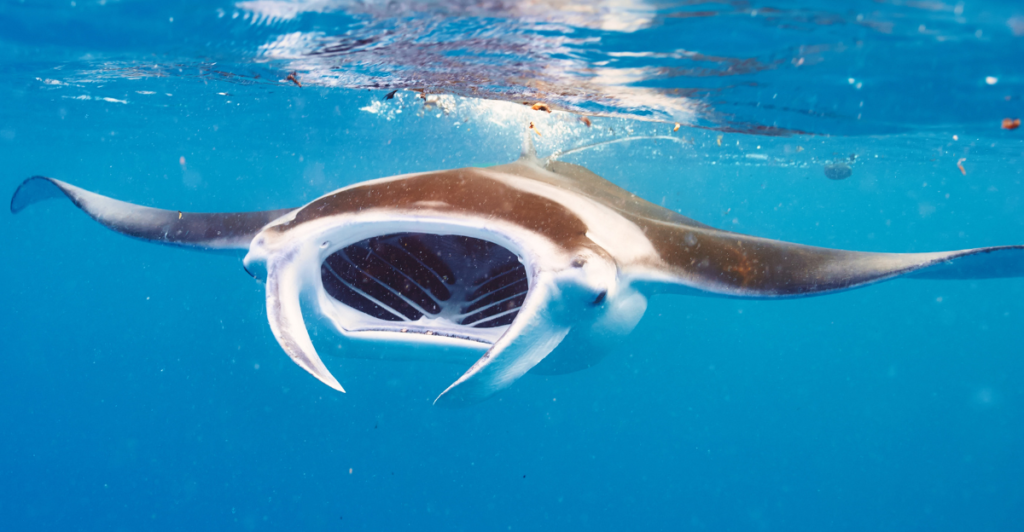
The giant manta ray (Mobula birostris) boasts a wingspan that can reach up to 29 feet, making it one of the most enormous rays. These graceful swimmers inhabit tropical and subtropical waters and are filter feeders, consuming large quantities of plankton. Known for their intelligence and curiosity, giant manta rays often interact with divers, showcasing their gentle nature.
Oarfish: The Elusive Ribbon
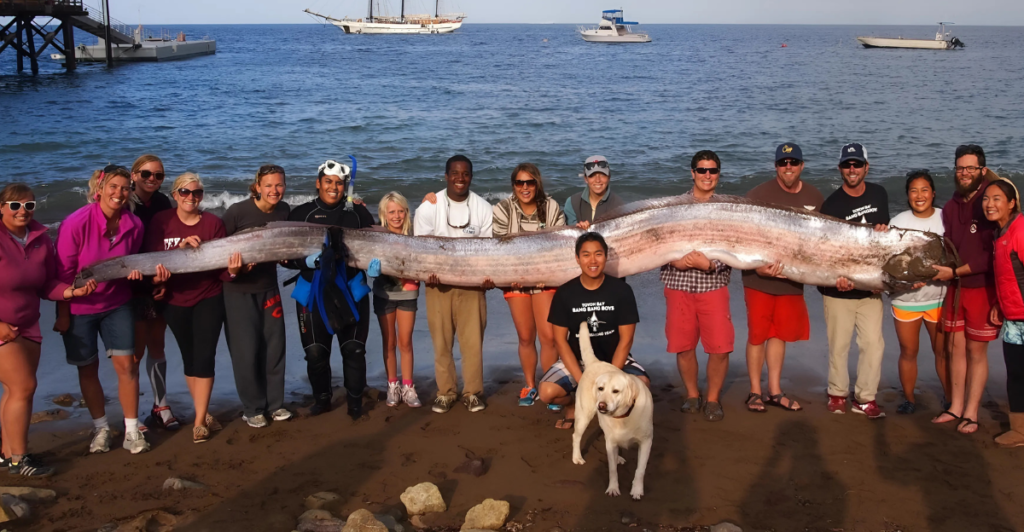
The oarfish (Regalecus glesne) is the longest bony fish, with reports of individuals reaching up to 36 feet. Characterized by their ribbon-like bodies and dorsal fins running the length of their bodies, oarfish inhabit deep ocean waters and are rarely seen near the surface. Their elusive nature has contributed to myths and legends about sea serpents.
Giant Isopod: The Deep-Sea Cleaner
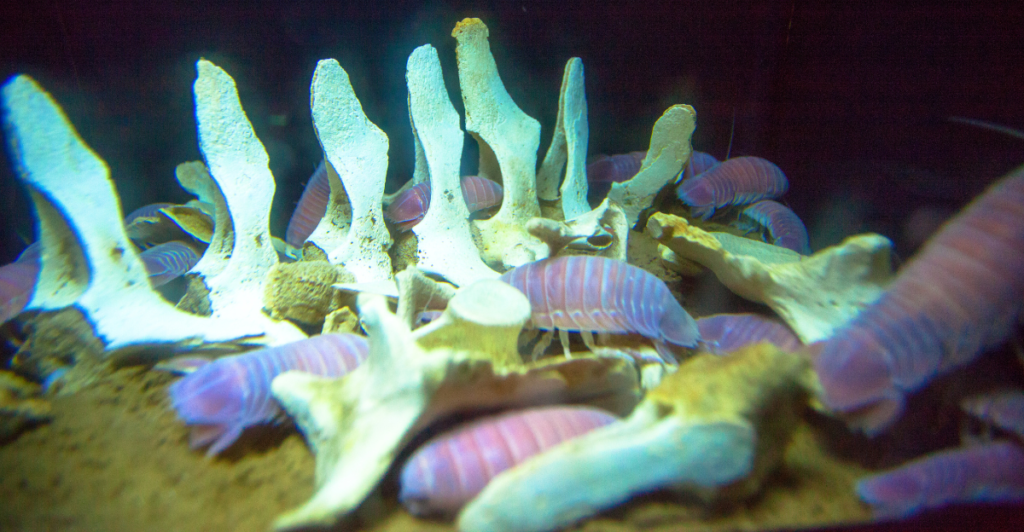
Giant isopods (Bathynomus giganteus) are among the largest crustaceans, reaching lengths up to 20 inches. Resembling oversized pill bugs, they inhabit the deep Atlantic and Pacific Oceans, scavenging for food on the ocean floor. Their large size is an example of deep-sea gigantism, where deep-sea creatures grow more significantly than their shallow-water counterparts.
Giant Pacific Octopus: The Master of Disguise
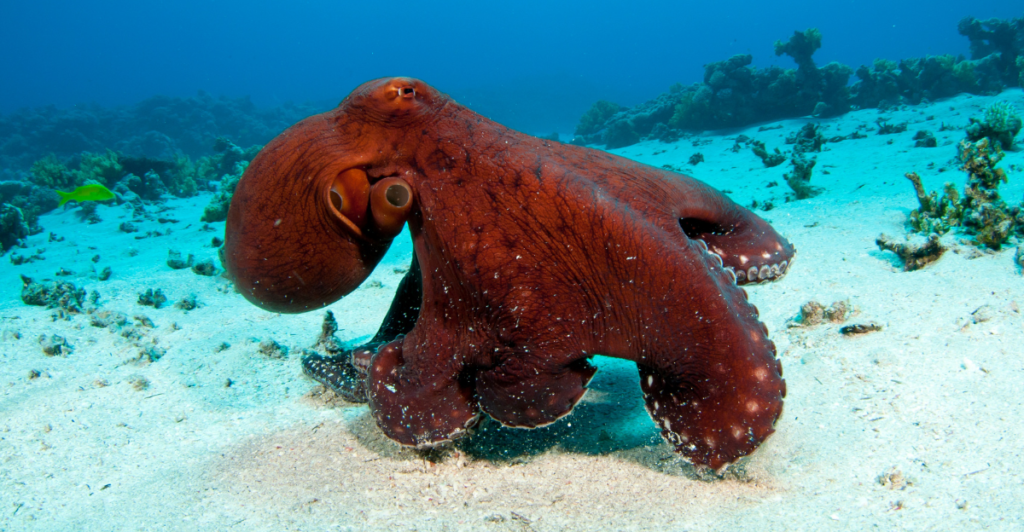
The giant Pacific octopus (Enteroctopus dofleini) is the largest octopus species, with arm spans reaching up to 20 feet. These intelligent creatures inhabit the coastal North Pacific and are known for their problem-solving abilities and camouflage skills. They feed on crustaceans and fish, using their powerful beaks to break through shells.
Japanese Spider Crab: The Long-Legged Crustacean
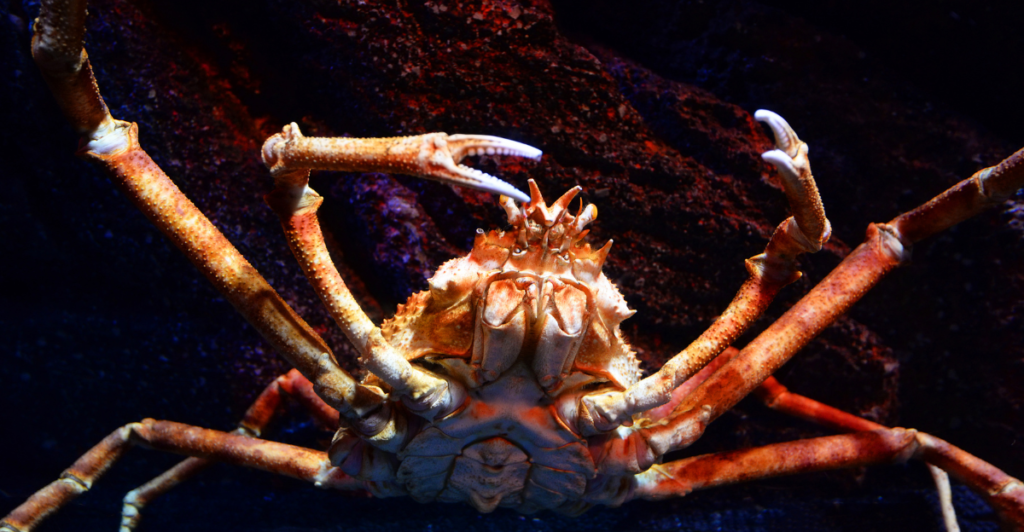
The Japanese spider crab (Macrocheira kaempferi) holds the record for the largest leg span of any arthropod, reaching up to 12 feet from claw to claw. Found in the waters around Japan, these crabs inhabit depths of up to 1,000 feet. Despite their intimidating appearance, they are scavengers, feeding on dead animals and plant matter on the ocean floor.
Lion’s Mane Jellyfish: The Tentacled Giant
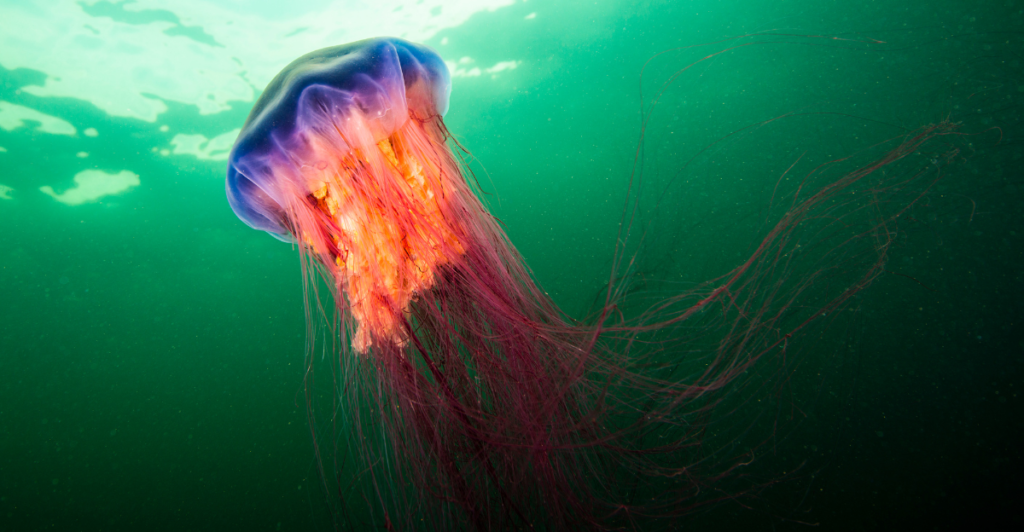
The lion’s mane jellyfish (Cyanea capillata) is the largest known jellyfish species, with tentacles extending up to 120 feet. It inhabits the cold waters of the Arctic, North Atlantic, and North Pacific Oceans, and its bell can reach a diameter of over 7 feet. Its long, trailing tentacles are equipped with stinging cells used to capture prey.
Giant Tube Worm: The Hydrothermal Resident
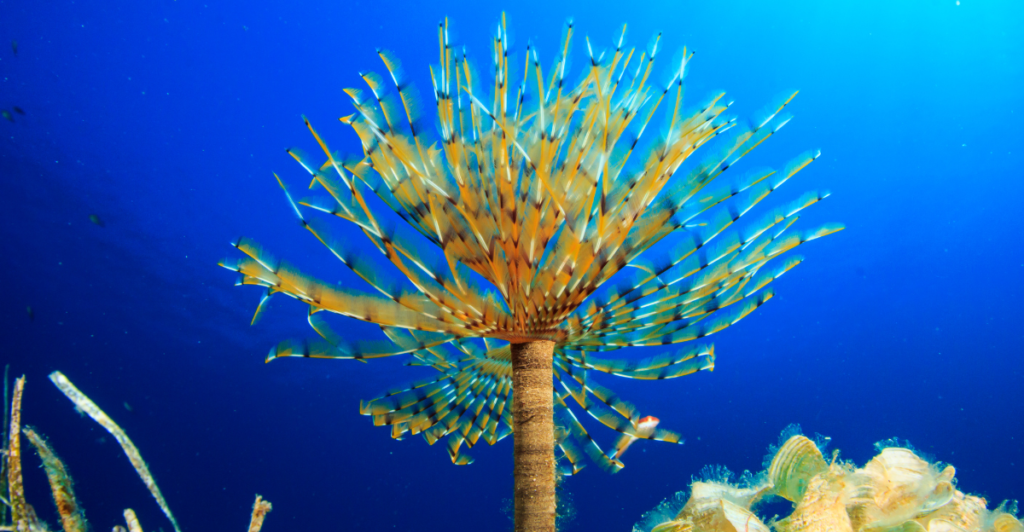
Giant tube worms (Riftia pachyptila) can reach lengths of up to 8 feet and are found near hydrothermal vents in the deep Pacific Ocean. Lacking a digestive system, they rely on symbiotic bacteria to convert vent chemicals into nutrients. Their unique adaptation allows them to thrive in one of Earth’s most extreme environments.
Great White Shark: The Apex Predator
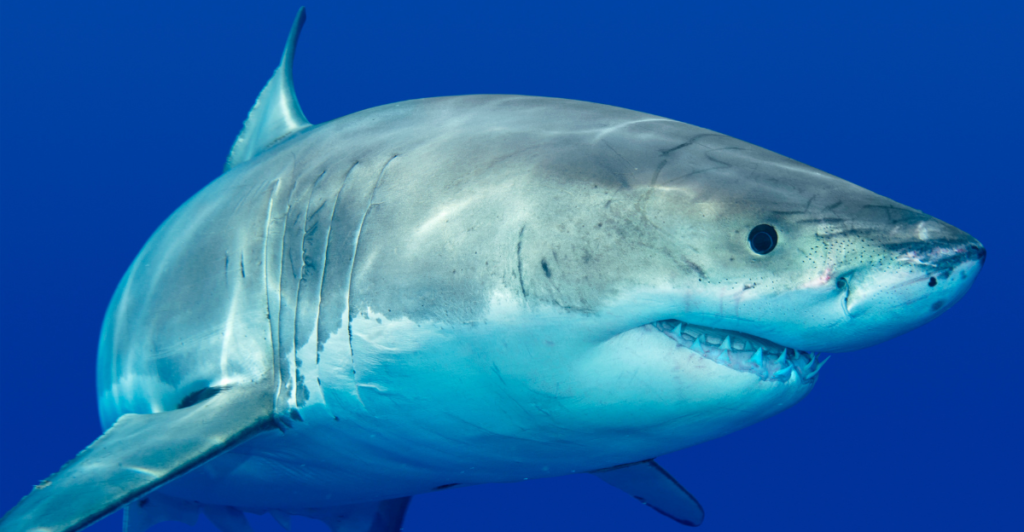
The great white shark (Carcharodon carcharias) is one of the largest predatory fish, with individuals reaching lengths of up to 20 feet. Found in coastal waters worldwide, they are known for their robust build and keen senses, making them formidable hunters. Despite their fearsome reputation, great white sharks play a crucial role in maintaining the health of marine ecosystems.
The Ocean’s Majestic Giants
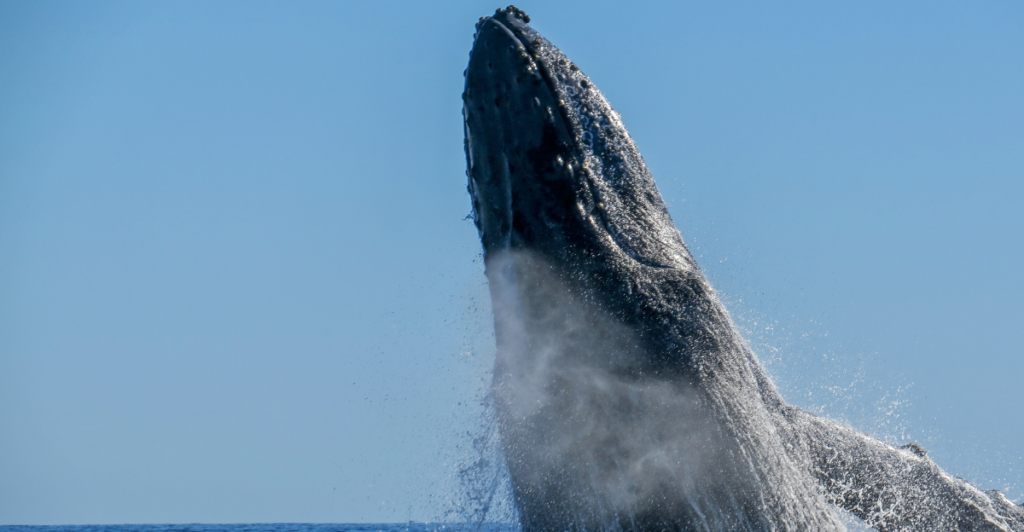
The ocean is home to some of Earth’s most astonishing and massive creatures, many of which remain mysterious. These giants play crucial roles in marine ecosystems, from the gentle blue whale to the elusive colossal squid. Some, like the great white shark, are apex predators, while others, such as whale sharks and giant manta rays, are peaceful filter feeders. As climate change and human activity threaten ocean life, conservation efforts are more critical than ever. By studying and protecting these colossal creatures, we ensure that future generations can continue to marvel at the ocean’s wonders.
Discover more of our trending stories and follow us to keep them appearing in your feed

“There Will Be Eruptions”: Concerns Mount as Yellowstone Supervolcano Activity Shifts
After 800 Years of Silence, This American Volcano Shows Signs of Activity
The Magnetic North Pole Just Shifted—Here’s What It Means
Hurricane-Like Bomb Cyclone Set to Impact These 8 States
References:
Reference 1
Reference 2
Reference 3
This article first appeared here
Stay connected with us for more stories like this! Follow us to get the latest updates or hit the Follow button at the top of this article, and let us know what you think by leaving your feedback below. We’d love to hear from you!







